Ever bought a generic pill and been shocked by the price-only to find your neighbor paid half as much for the exact same medicine? It’s not a mistake. Generic drug prices in the U.S. can differ by 300% between neighboring states, and the reasons aren’t about supply or quality. They’re about who’s in charge, who’s profiting, and what rules exist-or don’t-in your state.
Same pill, different price: It’s not random
You might think a 30-day supply of generic atorvastatin (the cholesterol drug formerly known as Lipitor) should cost the same no matter where you live. But in California, someone with insurance might pay $45. In Texas, the same prescription under a different plan could cost $120. In rural Montana or West Virginia, it might hit $150 because there’s only one pharmacy in town with no competition. Meanwhile, in states like New York or Vermont, you might pay just $10 if you pay cash. This isn’t about the drug. It’s about the system.Who controls the price? It’s not the pharmacy
Most people assume pharmacies set prices. They don’t. The real power lies with Pharmacy Benefit Managers-PBMs. These are middlemen hired by insurance companies to negotiate drug prices. But here’s the catch: PBMs don’t always pass savings to you. They keep a cut, and how they do it varies by state. PBMs strike secret deals with drug manufacturers. They get rebates, discounts, and fees that aren’t disclosed to patients. Then they tell your insurer, “Here’s the price.” Your copay is based on that number, not the real cost. In states with weak transparency laws, PBMs can inflate prices knowing you won’t question them. In states like California and Maryland (before their law was struck down), patients get more visibility into pricing, which pushes prices down.State laws matter-more than you think
After years of federal inaction, states stepped in. Vermont led in 2016 with the first drug pricing transparency law. California followed in 2017. These laws forced PBMs and manufacturers to report pricing data. The result? Patients in those states paid 8-12% less for generics on average. But not all state laws survived. Maryland tried to ban “price gouging” on generic drugs in 2017. The courts shut it down, ruling that states can’t regulate prices that cross state lines. That decision scared off other states. Now, instead of capping prices, most focus on transparency-making PBMs show their math. Even then, enforcement is patchy. In states without strong laws, PBMs operate in the dark. And patients pay the price.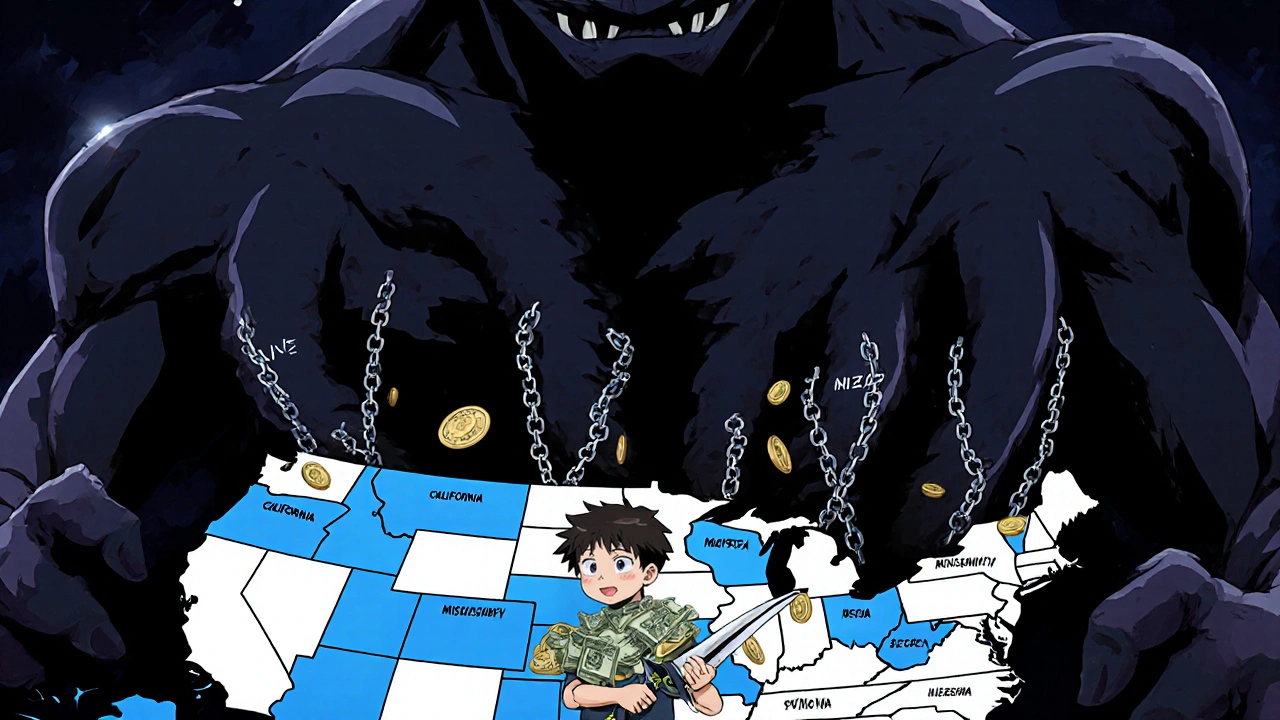
Medicaid and Medicare play a role too
Medicaid, which covers low-income patients, sets its own reimbursement rates for generic drugs. Some states use the National Average Drug Acquisition Cost (NADAC)-a federal benchmark updated monthly. Others use outdated formulas or negotiate their own deals. That means two people on Medicaid in different states can get the same drug with wildly different out-of-pocket costs. Medicare Part D, which covers seniors, is changing. Starting in 2025, there’s a $2,000 annual cap on out-of-pocket drug spending. But that only applies to Medicare beneficiaries-about 32% of the population. If you’re under 65 and insured through your job, you’re still stuck with whatever your PBM decides.Why cash often beats insurance
Here’s the strangest part: paying cash for generics is often cheaper than using insurance. Why? Because when you use insurance, your copay is based on the inflated price the PBM told your insurer. But when you pay cash, you’re buying directly from the pharmacy at the wholesale price-the real cost before markups. GoodRx and other price-comparison tools show this clearly. In 2022, users found that paying cash saved them 30-70% on generics. That’s why cash-only pharmacies like Mark Cuban’s Cost Plus Drug Company and Blueberry Pharmacy are popping up in cities nationwide. They cut out the PBM entirely. And it’s not just fringe users. In 2020, 4% of all prescriptions filled in the U.S. were paid in cash-and 97% of those were for generic drugs. People are figuring it out.Why rural areas pay more
Competition drives prices down. In big cities, you might have 10 pharmacies within a mile. In small towns, there’s one. That one pharmacy doesn’t need to compete. It can charge more. Add to that: fewer pharmacies mean less bargaining power with PBMs. And if the local pharmacy is owned by a chain, they might be forced to charge higher prices to meet corporate targets. In states like Mississippi or South Dakota, rural residents often pay double what urban residents pay for the same generic. There’s no law to stop it.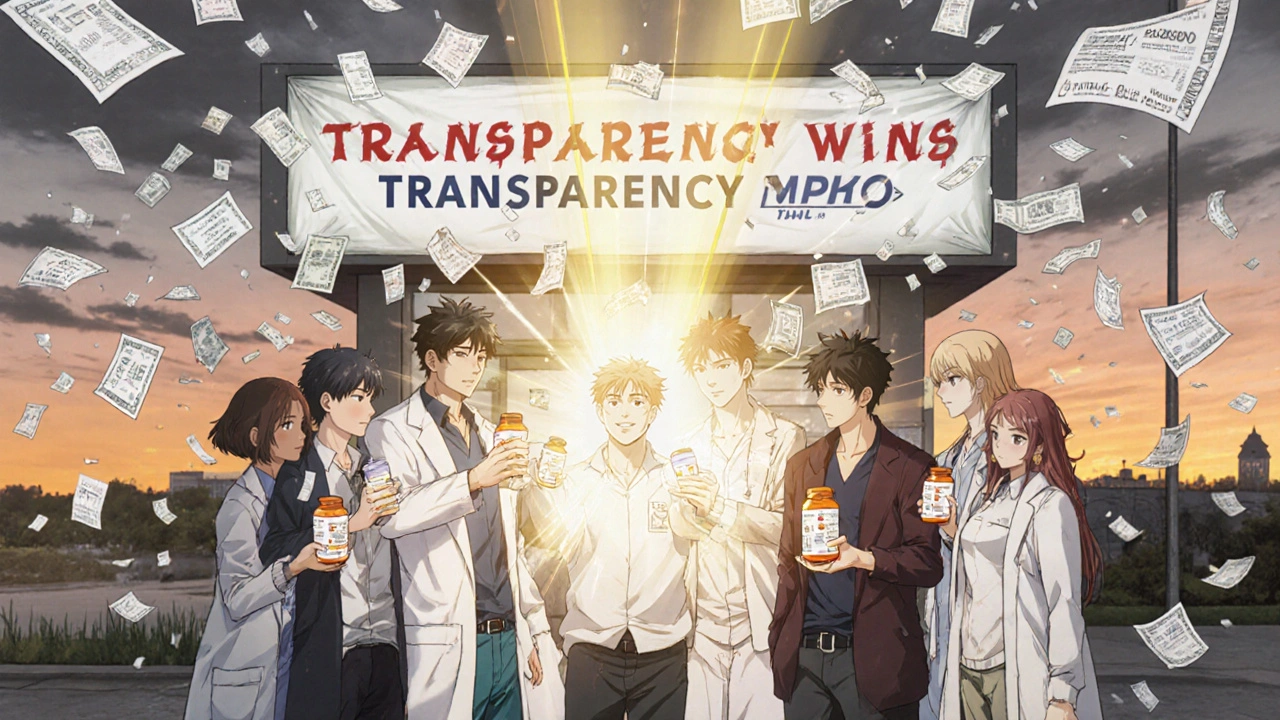
What’s changing? And what’s not
The Inflation Reduction Act of 2022 brought some relief-but only for Medicare patients. Insulin is capped at $35 a month. Out-of-pocket spending for seniors will be capped at $2,000 in 2025. That’s huge. But it doesn’t touch the 68% of Americans who get drugs through private insurance. Meanwhile, 18 states now have drug affordability boards that review prices and recommend limits. But without enforcement power, many of these boards are toothless. The real leverage? Transparency. When patients can see what a drug actually costs, and compare prices across pharmacies, the system shifts. States that require PBMs to report pricing data are seeing slower price growth. States that don’t? Prices keep climbing.What you can do right now
You don’t need to wait for a law to change. Here’s how to save money on generics today:- Use GoodRx or SingleCare before you pay. Enter your drug name and zip code. You’ll see cash prices at nearby pharmacies.
- Always ask: “What’s your cash price?” Even if you have insurance. Sometimes it’s cheaper.
- Switch to a cash-only pharmacy if you’re paying high copays for generics. Many charge $5-$15 for common meds.
- Check your state’s transparency laws. If your state requires PBM reporting, use that data to negotiate.
- Don’t assume your insurance is helping. If your copay is over $20 for a generic, you’re probably overpaying.
It’s not about the drug. It’s about the system
Generic drugs are the backbone of affordable healthcare. They make up 90% of prescriptions but only 18% of total drug spending. That’s a win-if the system works. But right now, it doesn’t. The same pill, made in the same factory, sold in the same bottle, costs more in one state than another-not because it’s better, but because the rules are broken. The fix isn’t complicated: transparency, competition, and cutting out middlemen who profit from confusion. Until then, the best tool you have is knowledge. Know your price. Compare it. Pay cash if it saves you money. And don’t let anyone tell you it’s normal to pay more just because of where you live.Why is my generic drug more expensive in my state than in another?
Generic drug prices vary by state because of differences in Pharmacy Benefit Manager (PBM) contracts, Medicaid reimbursement rules, pharmacy competition, and state transparency laws. PBMs negotiate secret deals with drug makers and set prices that aren’t always passed on to patients. States with stronger disclosure laws, like California, tend to have lower prices because patients can compare costs and pressure providers to lower them. In states without these rules, PBMs can inflate prices without accountability.
Should I use my insurance or pay cash for generic drugs?
For generic drugs, paying cash is often cheaper than using insurance. That’s because your insurance copay is based on an inflated price set by your PBM, not the actual cost of the drug. When you pay cash, you’re buying at the wholesale price, which can be 30-70% lower. Always ask the pharmacy for their cash price before using insurance. Tools like GoodRx can show you the lowest cash price near you.
Do state laws really make a difference in drug prices?
Yes. States that require PBMs to report pricing data, like California, Vermont, and New York, have seen generic drug prices rise more slowly than in states without transparency laws. Patients in these states pay 8-12% less on average. Maryland tried to cap generic drug prices directly, but a federal court blocked it, saying states can’t regulate interstate commerce. So now, transparency-not price caps-is the most effective tool states have.
Why are rural pharmacies more expensive for generics?
Rural areas often have only one or two pharmacies, so there’s little competition. Without competition, pharmacies can charge more. They also have less bargaining power with PBMs, which means they get worse deals on drug prices. These costs get passed to patients. In contrast, urban areas with many pharmacies compete on price, which drives costs down. This gap is wider in states with no price transparency laws.
Will the Inflation Reduction Act fix state-level price differences?
Not directly. The Inflation Reduction Act caps insulin at $35 and out-of-pocket drug spending at $2,000-but only for Medicare Part D beneficiaries. Since most state-level price differences affect people under 65 with private insurance, the law won’t help them much. However, it does pressure manufacturers to slow price hikes, which could indirectly reduce upstream costs. Real change for non-Medicare patients will come from state transparency laws and cash-payment alternatives.


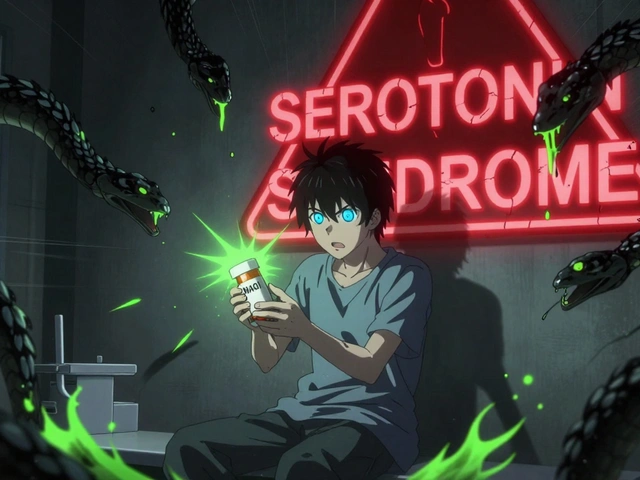


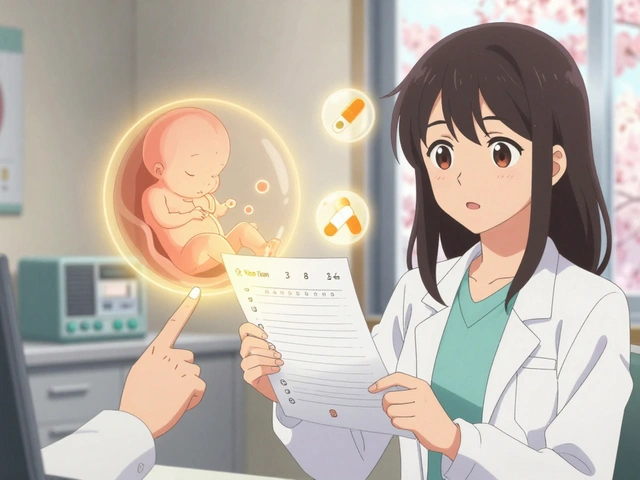

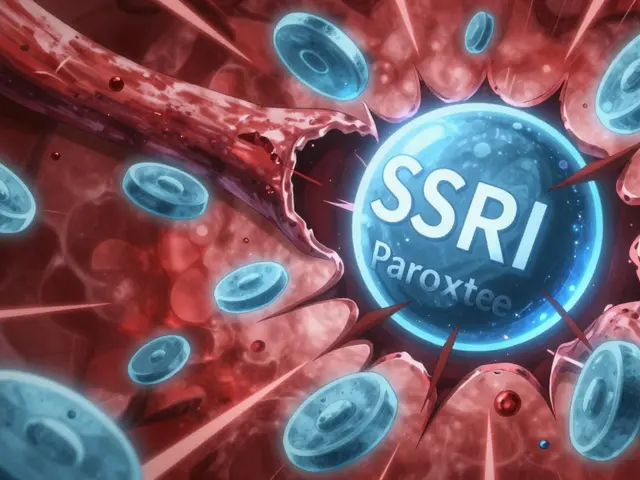


Interesting how the system rewards obscurity. The real scandal isn’t that prices vary-it’s that no one’s held accountable for it. Transparency laws sound nice, but without teeth, they’re just fancy brochures.
People think they’re saving money with insurance, but they’re just funding middlemen who don’t even show up to the pharmacy.
It’s capitalism with the labels peeled off.
So let me get this straight-we’re supposed to be grateful that cash is cheaper than insurance… because the system is rigged?
Wow. Groundbreaking. I’ll just pay $15 for my blood pressure meds like some kind of 19th-century barterer. Thanks, America.
Also, GoodRx? More like GoodRipoff with a pretty website.
Y’all are missing the real plot. PBMs aren’t the problem-they’re the symptom. The real puppeteers are the pharmaceutical conglomerates that own the PBMs, the insurers, the pharmacy chains, AND the lobbying firms that kill state laws. It’s a single entity disguised as a hundred companies.
Ever wonder why every generic drug has the same logo on the bottle? It’s not coincidence. It’s consolidation. The same 4 corporations control 90% of the market, and they’re using state-by-state fragmentation to avoid federal regulation.
They don’t want transparency-they want you to think it’s random. It’s not. It’s calculated. And if you think this is about healthcare, you’re delusional. This is asset stripping with a stethoscope.
And don’t get me started on how Medicaid’s NADAC formula is manipulated to underpay rural pharmacies so they collapse, leaving only corporate chains that jack up prices. It’s a death spiral engineered from D.C.
They’re not just profiting. They’re designing the collapse. And we’re all just waiting for our turn to pay.
OMG YES!! I just paid $8 for my generic metformin at CVS using GoodRx!! My insurance wanted $42!! 😭 I was so mad I cried in the parking lot!!
Also my cousin in Texas paid $110 for the same thing!! HOW IS THAT FAIR?? 😤
PS: Cash only forever now!! 💪💊 #GenericDrugRevolution
The structural failure here is not just economic-it’s moral. We treat healthcare as a commodity rather than a right, and the consequences are measured in skipped doses, broken bank accounts, and premature deaths.
Transparency is a necessary step, but it is not sufficient. We need price controls, anti-trust enforcement, and the dismantling of PBM monopolies.
What’s alarming is how normalized this has become. People accept paying $150 for a $5 drug because they’ve been told it’s ‘how the system works.’
It’s not. It’s exploitation dressed in bureaucracy.
And until we treat pharmaceutical pricing as a public policy crisis-not a market quirk-we’re not just failing patients. We’re failing our own humanity.
generic drugs are just as good as brand name so why pay more
also why do we even have insurance for $5 pills its retarded
and why is california always the one doing the right thing
they need to make all states copy california or else
Pharmacy Benefit Managers are the quintessential rent-seekers-extracting value without creating it. The PBM model is a classic principal-agent problem where the agent (PBM) internalizes incentives misaligned with the principal (patient).
Furthermore, the absence of price elasticity in pharmaceutical demand creates a perfect environment for monopolistic rent extraction.
State-level transparency mandates are Pareto-improving interventions that reduce informational asymmetry. However, without binding price caps, the market continues to operate under a perverse incentive structure where opacity is profitable.
USA is a joke. In India we pay $0.50 for the same pill. You guys have a whole industry built on ripping off sick people. How is this legal? You have a president who says he’s for the people but lets this continue? Pathetic. Fix your system or shut up.
Let me be clear: this isn’t about capitalism. It’s about the complete collapse of the social contract. The PBM-industrial complex isn’t just profiting-it’s weaponizing healthcare. The fact that you need a third-party app like GoodRx to even know what you’re paying is a sign that democracy has been outsourced to corporate algorithms.
And don’t tell me ‘pay cash’-that’s a Band-Aid on a hemorrhage. When the system is designed to make you feel guilty for wanting affordable medicine, you’re not in a free market-you’re in a cage.
What’s next? Charging for oxygen? Charging for clean water? We’re already there. We just haven’t named it yet.
And if you think this is isolated to drugs, you’re not looking hard enough. This is the model for everything now: education, housing, internet. Profit through confusion. Exploitation through complexity.
We are being systematically disempowered. And the worst part? We’ve been taught to thank them for the crumbs.
It’s fascinating how the market fails so spectacularly here. The inefficiency is not accidental-it’s structural. The absence of a unified pricing mechanism reveals a deeper truth: healthcare in the U.S. is not a service, but a financial instrument.
What we’re witnessing is the commodification of biological necessity. And the tragedy is that the most vulnerable are forced to become financial analysts just to survive.
Transparency, while useful, is a minimal concession. The real question remains: why do we tolerate a system where life-saving medication is subject to geographic arbitrage?
Always ask for the cash price. Always. I’ve saved hundreds just by asking. No shame in it. No magic. Just knowing your rights.
And if your pharmacy gives you side-eye? Find another one. There are plenty that will treat you like a human.
You’re not broken. The system is.
Why do people still use insurance for generics I dont get it
cash is always cheaper like duh
also why is everyone surprised this is happening its been like this for years
stop acting like you just discovered the moon
Okay so here’s the real tea: PBMs aren’t just middlemen-they’re the gatekeepers of a black market in healthcare. They create phantom pricing tiers so they can siphon off rebates from manufacturers while pretending to lower costs for insurers.
And here’s the kicker: the same companies that run PBMs also own pharmacy chains. So they inflate the price you pay through insurance, then sell you the drug cheaper at their own store if you pay cash. It’s a double dip.
It’s not broken. It’s designed. And if you think this is the first time Big Pharma has rigged the system, you haven’t read the history books.
Next up: insulin pricing in Puerto Rico. They’re already testing the model there. Don’t say you weren’t warned.